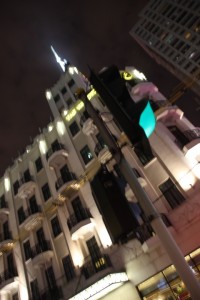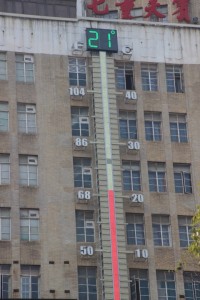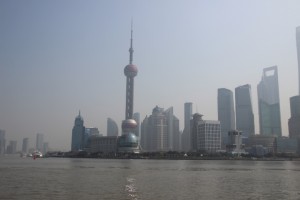Saturday 5th March
Today we set out to discover the Shanghai waterfront known as The Bund. Leaving the hotel we made our way along East Nanjing Road which was once China’s most famous shopping street.
Today it is pedestrianised and awash with neon signs and the same so called deigner label stores found anywhere else in the world. However, one is definitely in China as its language and culture have not been overtaken by internationalisation. The street rose to prominence in the 1920s as the site of China’s first department stores. One example, the Shanghai No 1 Department Store, was formerly known as The Sun Company which was the biggest in the city and the first to have an escalator. Nearby are other Art Deco buildings. Our hotel, The Yangtze Boutique, was built in 1934 and restored to preserve the Art Deco features. Next door is the Moore Memorial Church which was designed by the Shanghai architect, Ladislaus Hudec, in 1929. He also designed the nearby Park Hotel which was once Shanghai’s tallest building.
The weather forecast for today predicted temperatures up to 23C. As we walked towards The Bund it was certainly warming up but our first view was still a hazy one. By midday the sun had burnt away the haze and clear skies lasted until dusk when heavy cloud threatened rain.
At the end of East Nanjing Road is the recently regenerated waterfront, now a 1km long promenade alongside the Hudngpu River.
Shanghai was a port in the 14th century but it was not until the 18th century when British traders based in Canton traded its opium in Shanghai in exchange for silver and other products such as silks, tea and even rhubarb it became an international trading centre. The highly addictive drug permeated all levels of Chinese society and led to unrest between Britain and China that finally erupted in the first Opium War. The Treaty of Nanking in 1842 brought the war to an end and opened the ports of Shanghai and Canton to the west. Shanghai was the most prosperous of these ports due to its geographical location and trade flourished as areas of the city were divided into British, French and American Concessions. The original British Concession included The Bund and all of the land to the end of East Nanjing Road.


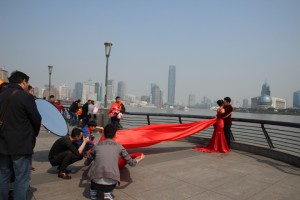
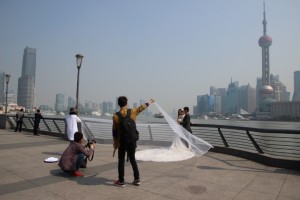






 The city today is the country’s foremost economic hub as can be seen with Art Deco buildings on the Concession side of the river and on the opposite side is the district of Pudong which in the space of 20 years has gone from farmland to China’s economic powerhouse with soaring skyscrapers and telecommunication towers and a riverside promenade which features full length views of The Bund across the river. We will see how good it is tomorrow.
The city today is the country’s foremost economic hub as can be seen with Art Deco buildings on the Concession side of the river and on the opposite side is the district of Pudong which in the space of 20 years has gone from farmland to China’s economic powerhouse with soaring skyscrapers and telecommunication towers and a riverside promenade which features full length views of The Bund across the river. We will see how good it is tomorrow.



